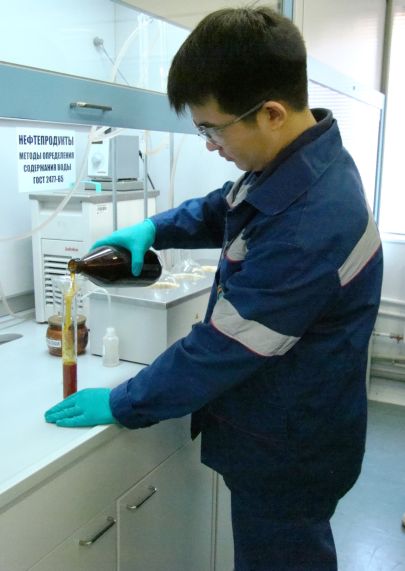
Crude oil from new fields - Kashagan and Filanovsky, - which started coming to CPC pipeline system in late 2016 has had no significant impact on CPC Blend quality. The received crude oil fully meets the specifications stated by the Producers.
Thus, in 2016 the CPC Blend average quality parameters amounted to the following: density - 46.5 oAPI, sulfur content - 0.52%mass. In 2017 these parameters have the following values: 46.2 oAPI and 0.54%mass, respectively.
The mercaptan content in CPC Blend lifted at CPC Marine Terminal does not exceed 20 mg/kg, which is a good parameter compared to admissible values as per GOST Р 51858-2002.
Caspian Pipeline Consortium exercises rigid control of the quality parameters of the crude oil injected in CPC system and lifted.
Since December 2002 a unique Quality Bank (QB) has been functioning in CPC, which represents a mechanism of settlements among the Shippers for the purpose of providing fair financial adjustments required to reflect the relative value of the crude oil pumped through the trunk crude pipeline in CPC Blend.
All Shippers (Participants) who inject their crude oil into CPC System are obliged to participate in the Quality Bank as a condition of the Company furnishing common stream carriage. All Participants agree to pay to the Trustee Account any computed settlement adjustments to guarantee availability of funds for making payments as Quality Bank settlements among the Participants.
It should be noted that Metering Operations between the delivering and the accepting parties take place at the Pump Stations and Marine Terminal, which are equipped with the crude oil quantity and quality measurement systems. An acceptance/delivery act and quality passport signed by both parties are issued for each accepted/delivered oil batch.
At the International Oil and Gas Conference held in Astana in June 2017, Kairgeldy Kabyldin, Deputy General Director, RK Government Relations, CPC-K, noted: “CPC Blend has always been sold with a markup compared to the Urals. The prices of CPC Blend and Urals are currently becoming equal. CPC Blend fair value determined on the basis of oil products composition after refinery is considerable higher that the Urals price.”
The current market situation has a temporary nature and is primarily related to the growth of seasonal consumption of certain types of oil products.
At the same time, Mr. Kabyldin emphasized that CPC System was the most cost-efficient route of oil export from Kazakhstan.
About CPC:
The CPC pipeline system is one of the largest investment projects with foreign capital in the energy sector in the CIS. The length of the pipeline connecting oil fields in Western Kazakhstan with the Marine Terminal in Novorossiysk is 1,511 km. CPC’s Marine Terminal is equipped with Single Point Moorings that allow to load tankers safely at a significant distance offshore, including bad weather conditions.
CPC Shareholders: Russian Federation (represented by Transneft – 24% and CPC Company – 7%) – 31%; Republic of Kazakhstan (represented by KazMunayGaz – 19% and Kazakhstan Pipeline Ventures LLC – 1.75%) – 20.75%; Chevron Caspian Pipeline Consortium Company - 15%, LUKARCO B.V. - 12.5%, Mobil Caspian Pipeline Company – 7.5%, Rosneft-Shell Caspian Ventures Limited – 7.5%, BG Overseas Holding Limited - 2%, Eni International N.A. N.V. - 2% and Oryx Caspian Pipeline LLC – 1.75%.